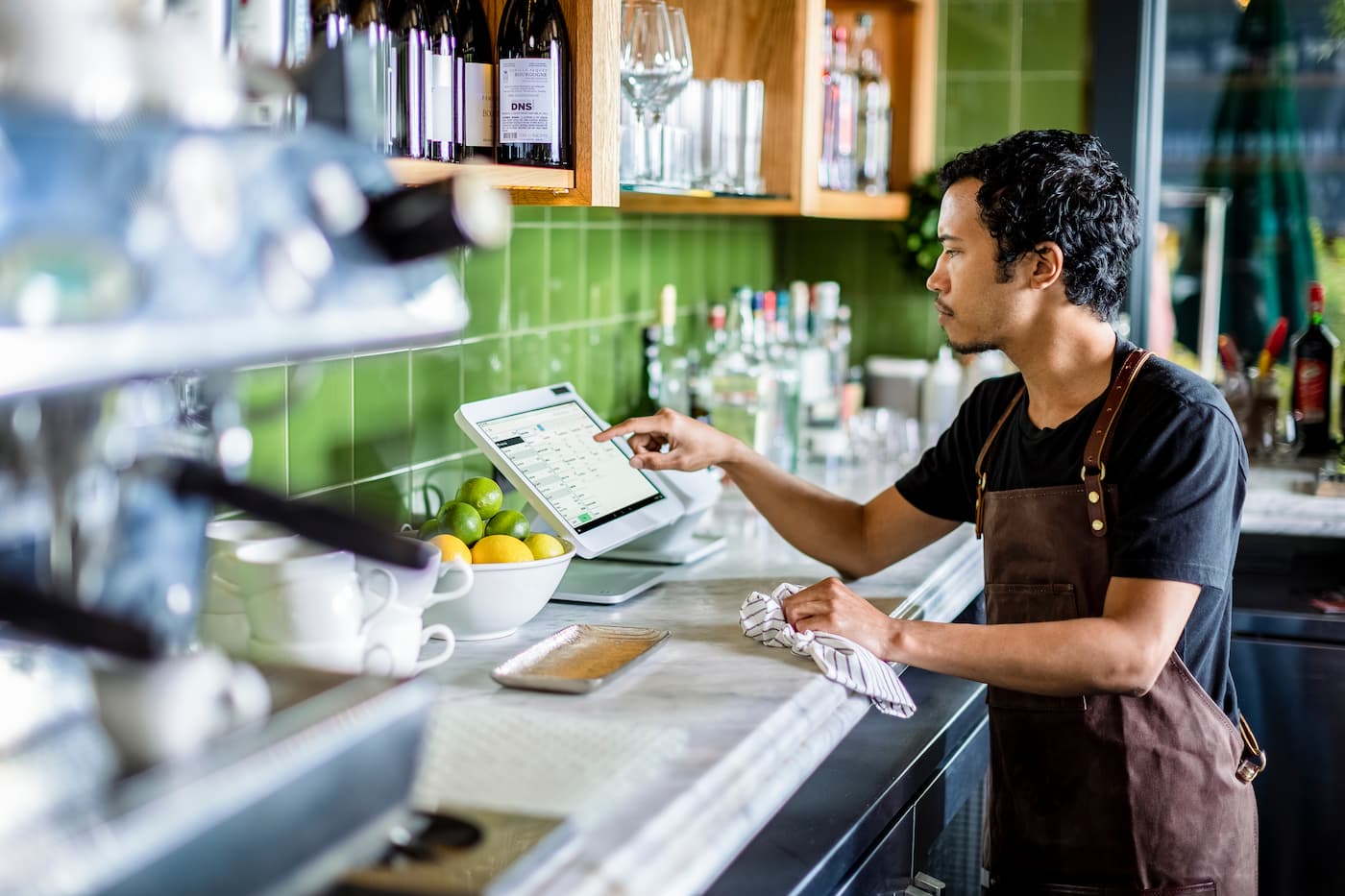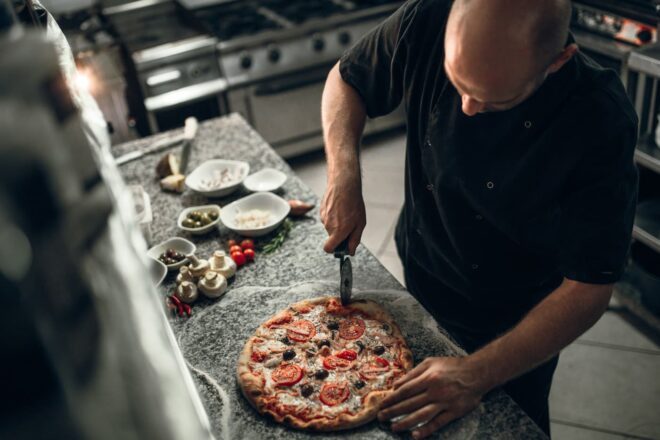The true cost of POS systems for restaurants
Editorial Team
7 min read
This guide explains what to expect in terms of the cost of POS systems for restaurants, and how the benefits of restaurant POS systems can result in a positive return on investment.
Like any form of technology or tool for a restaurant, there’s typically an up-front investment for installing and maintaining a point of sale system. Restaurant POS systems enable credit card and digital transactions, and they’re an essential tool for most restaurants today. While restaurant owners will need to account for up-front and potentially ongoing costs, the benefits of POS systems in restaurants can result in increased sales, improved revenue, better customer satisfaction, increased referrals, and more.
How much does a restaurant POS system cost?
There are typically a few costs associated with installing and maintaining operations of a restaurant POS system. The exact pricing depends on the POS system you choose, but generally costs will fall into the following categories;
- Initial setup costs: This refers to a one-time initial setup fee to get your POS system up and running.
- Hardware and software expense: In regards to POS system cost per month, you’ll usually pay per POS system. These prices normally include hardware such as your mobile card reader or point of sale system as well as software services, including restaurant operations and staff management features. POS software can also include inventory management to control restaurant food waste, online ordering for restaurant features, and more.
- Training and integration costs: Clover offers free training and support for integrating your POS with existing technology and tools. Others may charge for training sessions and integration.
- Maintenance and support fees: Clover offers maintenance and support for free, while others may charge a monthly or per-service fee.
- Transaction fees and processing costs: Once you’re using your POS system, you may need to pay the POS provider a fee for processing debit card and credit card transactions. This is typically a percentage of the total sale. Different fees may be assessed for different types of payment. For example, you may have to pay more when customers pay with a specific type of credit card, when you key in credit card numbers, or when completing various other actions. With Clover, customers may be charged flat fees as low as 2.3% plus $0.10 per transaction.
Keep in mind, cheaper isn’t always better with POS systems. You’ll want to think about the money-saving and money-generating features a POS can provide, including restaurant management features, when you’re choosing a POS system.
The consequences of operating without a restaurant POS system
Now that you have an idea of the costs of using a restaurant POS system, what would it cost your restaurant to operate without a POS system? Not having POS capabilities may result in the following costs related to restaurant operations and revenue.
Hindered customer service and satisfaction
If you don’t give customers a way to pay with a card, they might not do business with your restaurant. According to a recent poll from Gallup, 60% of Americans said they make zero or “only a few” purchases with cash, which was double the number from the previous five years.
As the U.S. increasingly moves toward becoming a cashless society, many Americans carry zero cash on them. If you can’t accept card payments with a POS system, you may lose out on countless customers, sales, revenue, and referrals.
Another potential benefit of POS systems is that some will enable you to use QR ordering to improve restaurant service. This gives guests more control over their restaurant experience, which can improve both customer satisfaction and sales. A study reported by Restaurant Dive, found businesses see a 35% increase in sales within the first 30 days of implementing QR code ordering.
Inaccurate inventory management
One of the main benefits of a POS system in a restaurant is that it can automatically track inventory going out and alert you to inventory that needs to be restocked. Without a POS system, you’ll have to track inventory using another tool or manually, which could introduce errors into the process.
Accurate inventory management helps you optimize food purchases. It also ensures customers can order what they want. Being out of stock could negatively impact customer satisfaction, while ordering too much of an item could result in wasted food and higher expenses.
Increased risk of errors and fraud
Cash-only businesses are more susceptible to problems like miscalculations, theft, and employee fraud. While a POS system will accurately display how much change a customer needs, having to do manual calculations, and counting out cash to hand back, could result in costly errors. When employees overcompensate customers, your business loses money. When a customer is short-changed, that could negatively impact sentiment for your business.
Managing cash can also make your business more at-risk for theft from both outsiders and employees. A POS system always accurately represents transactions, so you know how much cash you should have on-hand at all times.
Lack of data-driven decision-making
Another powerful feature of POS technology is that it can provide restaurant owners with instant access to insightful analytics. POS technology has the capability to track:
- Total sales
- Sales and tip percentages by employee
- Sales for each menu item
- Employee rewards member data
- And much more!
With POS technology, you can use data to inform decision-making. For example, you may decide to build menu combination specials that feature your most popular dishes, or promote dishes that aren’t selling as well through special offers. You can identify your top employees, and apply the sales and customer service tactics they use in new employee training.
Without a POS system tracking your sales data, you’ll have to manually collect insights. That results in more time and resources required, as well as puts your business at risk for manual errors.
Loss of efficiency and productivity
All the above disadvantages will ultimately result in wasted time and resources, and a loss in productivity and efficiency. A lack of POS technology places added burdens on your staff. It makes keeping track of data harder to manage. It leaves businesses with the responsibility of accurately tracking sales, managing cash flows, and gathering data.
Whenever there’s an error, whether it’s with giving customers back the right amount of change or inaccurately tracking an essential ingredient in the kitchen, that can create a burdensome trickle effect that impacts your entire business operations. POS technology gives customers the ability to pay exactly how they want to, while also simplifying the way you run your business.
Quantifying the financial impact of not having a POS system
There are countless examples of businesses losing money because they don’t have a POS system. Even with each transaction, customers may be more likely to pay more when they can use a credit card.
For example, a recent study by MIT Sloan School of Management and University of Utah found using a credit card activates the neural reward centers in the brain, which often results in higher purchases.
Another study, reported by Restaurant Technology News, found 84% of full-service restaurants, and 72% of quick-service and fast casual restaurants, reported they achieved a “dramatic” or “significant” improvement in revenue performance after deploying POS systems. The research also found restaurants that use POS mobile systems saw a 10% to 15% increase in average check size.
The U.S. Chamber of Commerce states “small businesses need POS software” to support customers’ preferred payment methods, speed up the checkout process, and automate manual tasks.
The data is clear: restaurants that implement POS systems have higher potential to increase revenue and drive better customer results than competitors.
Build a better restaurant business with Clover POS
In today’s digital age, POS systems are a must-have for full-service restaurants to provide the payment options customers want. POS systems:
- Streamline operations and improve efficiency
- Enhance customer experiences and satisfaction
- Provide data-driven insights for better decision-making
- Help restaurants achieve long-term cost savings and increase revenue potential
POS systems are scalable, so the same system can work as you expand a restaurant. They’re easy for staff to train on and can improve the accuracy, speed, and efficiency of your restaurant operations.
If you’re in the process of choosing a restaurant POS system, get a free consultation for how a restaurant POS system can improve your business.
Why wait? Get started with a Clover POS system today to elevate your business.
Related Posts
How to open a ghost kitchen
4 tips for building a great workplace culture
Popular Topics
Stay In Touch
Sign up and learn more about Clover.
Thank you for your subscription!
Recent Stories
- Jewelry store supplies and equipment needed for opening day
- How small businesses can use employee discounts to retain staff
- Tips and tricks for opening an outdoor pop-up restaurant
Please share your contact information
to access our premium content.
Thank you for sharing your contact information.
Download Now





